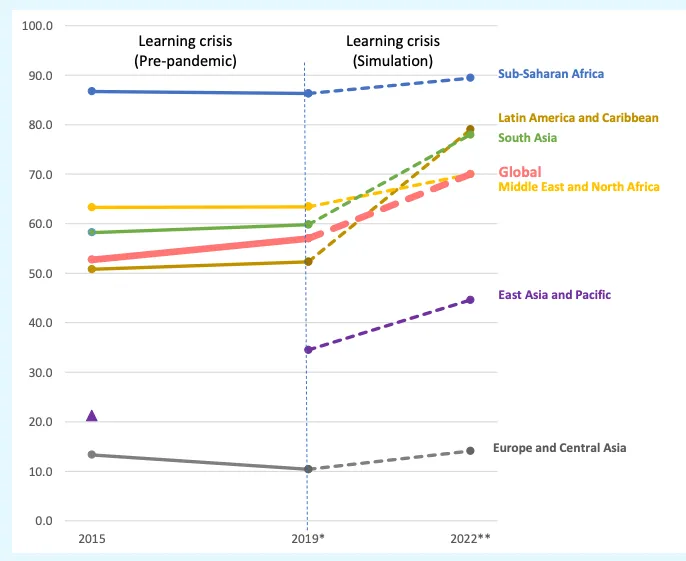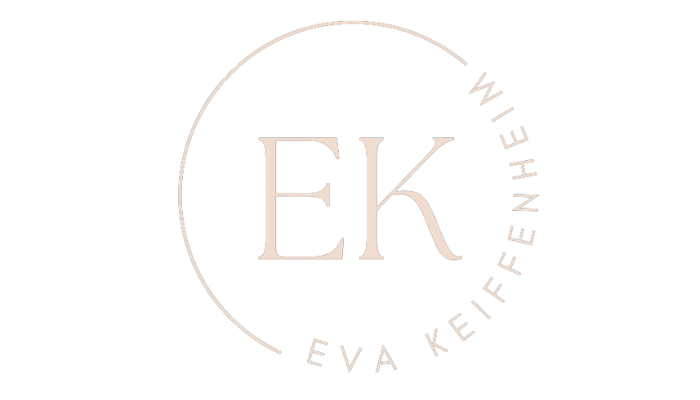
Building Better Futures for All Children through Learning Ecosystems
A brief guide to find your leading role in creating the change you wish to see in this world.
What if the answer to our global challenges lies not only in grand political movements but also in the changes in what we learn and teach?
Education, often seen as a preparation for the future, is more than that — it’s the creation of our future. What happens in today’s classrooms reflects the world of tomorrow.
To ensure the well-being of all born and yet-to-be-born generations on this planet, we need to change what and how we teach and learn.
This article isn’t just a read; it’s an invitation — a call to action for you to join a movement that reimagines how we teach and learn. It’s a story about system change and collective impact and a potential pathway to have a lasting positive impact on humanity’s future.
How One Experience Changed My Worldview
I never thought I’d find myself in the world of academia. As a first-generation student from a small German town of 1,000 people, I embraced university life not out of ambition but by happy accident. The common wisdom in my community was to forgo higher education for immediate employment.
In my working-class upbringing, hard work was a cornerstone of my identity. At 16, I took on a factory job during the summer holidays. By 18, I started my days before sunrise, working as a postwoman, delivering parcels and letters.
Before turning 21 and throughout my undergraduate years, I climbed the ladder in various part-time jobs. I evolved from a cleaning lady to a hostess, then to a retail sales agent. Later, I worked in a FinTech company, then moved to a startup job in New Delhi and landed a prestigious finance internship at a big bank in Shanghai’s World Financial Center.

Sitting at my desk on the 91st floor in Shanghai, I believed that ‘education and hard work leads to well-deserved success.’ At that time, I felt I deserved to rise to the ranks.
Back then, I didn’t know how my various privileged identities made me unaware of society’s complex issues.
Only after completing my master’s degree, when I chose to become a full-time teacher with Teach for Austria over a lucrative consultancy job, did I recognize and question my privileges. It was in the classrooms of Vienna that my perspective started to change profoundly.
Failing Students or Failing Systems? Sasha’s Story
Sasha was a student I worked with for two years, but his story speaks for countless similar stories from other children in my classrooms.
At 11 years old, Sasha’s daily reality is a labyrinth of challenges. Sasha speaks German like it’s his second language because it is. He’s trying to find his voice in a world that’s not just foreign but often deaf to his cries. The chaos of his home life, painted with the broad strokes of his mother’s battle with addiction, spills over into his school life, coloring it with shades of misunderstanding and neglect.
In school, the structure and demands of the classroom, so sharply contrasting with his chaotic home life, fail to accommodate or understand his unique struggles. Despite dedicated teachers, the school is unequipped to address the complex needs of students like him — especially with 25 individuals with similar realities in one classroom.
In light of the recent PISA results, many media outlets scream about poor student performance, but they’re missing the point. It’s not Sasha or students like him who are failing. It’s the system that is failing them.
This systemic failure is not just about language barriers. It reflects a broader, more insidious issue: the expectation that marginalized students should exert more effort than their privileged counterparts without equitable support or understanding of their circumstances. When uncoupled from empathy and equity, the standard of high expectations becomes an instrument of unfairness.
In the eyes of high-stakes testing, you see a failed student. But it’s not students like Sasha that are failing; it’s the system failing them.
Systemic Barriers that Perpetuate Inequalities
Let’s zoom out a bit. This isn’t just about Sasha or language barriers. It’s about a world where the color of your skin, the zip code of your birth, or the language you speak at home sets the course of your educational journey.
Educational inequality is a significant global issue, as shown in various studies. The OECD and UNESCO report significant disparities in education access and outcomes across income levels and regions, with stark differences in tertiary education completion and basic skills acquisition. The World Bank’s World Development Report 2018 highlights a ‘learning crisis’ in global education.

The reasons for this learning crisis are systemic — undertrained, undervalued, and underpaid teachers, access to education, an education financing gap, a lack of early childhood education, and poverty traps perpetuating existing disparities.
Last is the relatively recent realization that schooling doesn’t equal learning. Even if more and more children from marginalized contexts attend school worldwide, many go there day after day, needing help understanding something. Education systems leave a lot of children behind in learning as they progress in schooling.
The Path Forward
We can’t wait for schools or political short-termism to magically change in favor of better education systems. Here’s where our story for education system change takes a turn: Changing our education systems is our collective responsibility.
This isn’t a call for a few to step up; it’s an invitation for all to join in. Imagine a world where parents, students, activists, and policymakers are not just characters in the background but key players driving the narrative forward.
Collective leadership happens when a group of people, from students to teachers to activists to parents to policymakers, work together around a shared purpose and drive system-wide change that would be impossible for individuals to accomplish alone.
Collective leadership goes beyond individual leadership and embraces supporting and recognizing leadership in others, particularly those who have experienced the injustices of the existing system.
A new education story goes beyond school classrooms — imagine it as a thriving ecosystem, a place of joy and discovery, where learning is not a competitive race but a collaborative journey. Regardless of their background, every child is a protagonist and loves learning and growing.
Learning ecosystems are dynamic networks facilitating lifelong learning by linking diverse environments and stakeholders such as schools, businesses, civic society organizations, and government agencies.
Hence, these learning ecosystems extend beyond classrooms and incorporate informal spaces like museums, community gardens, yoga studios, boulder bars, and libraries to enhance learning outcomes and holistic well-being. Emphasizing diversity and adaptability, learning ecosystems continuously evolve to meet learners’ changing needs, offering inclusive educational pathways. Our collective focus should shift from classroom focus to developing learning ecosystems — which might look different depending on context and the requirements of communities.
Picture schools as thriving ecosystems where learning is a joyful, lifelong journey, where every child, regardless of background, is nurtured to their full potential.
This is not merely a change in structure but a paradigm shift in our understanding of education. We need to see education not just as a pathway to employment but as a vital tool for personal and societal growth. It’s about holistic learning, where emotional and social skills are as essential as academic achievements. In this new vision, education becomes a journey of self-discovery, community engagement, and global citizenship.
Three Examples Worth Looking at that Lead the Change
Well, now, what does this mean? And is this even realistic? For my work with the World Innovation Summit for Education — Agile Leaders for Learning Innovation Network, I came across the brilliant work of change leaders who have already shown that this new reality of collaborative leadership in learning ecosystems is possible.

First, there’s the Medellín Challenge. This Colombian city, once infamous for its turbulent past, is now scripting a new educational narrative. During the pandemic, they didn’t just adapt; they transformed. The Medellín Challenge intertwines the Sustainable Development Goals with local issues, creating a dynamic learning environment where students aren’t merely learners but active problem solvers. It’s a vibrant example of how schools can evolve into learning ecosystems, turning students into leaders of hands-on projects that have a tangible impact on their community.
A second example out of many is New Zealand — imagine an entire country engaging in a dialogue about the future of education. A ‘national education conversation‘ engaged families, communities, young people, and educators in a collective discussion about the future of education. Following this inclusive dialogue, New Zealand is reshaping its education system with collaborative leadership, emphasizing the importance of cultural identity and community involvement. Research programs like Te Kotahitanga showcase the power of inclusive education and the importance of cultural identity and community involvement in the learning process.
In San Marcos District in Cajamarca, Peru, Franco Mosso and Enseña Perú initiated a program to foster student leadership and agency. The project, involving over 25 local leaders, focused on collaborative and intergenerational methods and included a student leadership survey, a conference, and new leadership sessions in schools. This led to increased student engagement in leadership courses and the development of a district-wide agenda for educational transformation. The initiative’s success highlighted the impact of collaborative approaches in empowering students as change-makers.
These examples are more than just isolated success stories; they represent a broader movement toward rethinking education. They highlight the potential of collaborative, ecosystem-based approaches that recognize different communities’ unique needs and strengths.
Your Role in Shaping the Future of Education
Transforming the education system pushes us towards a path less traveled — a path that emerges not from rigid structures or antiquated systems but from the fertile ground of collective leadership and shared humanity. This journey requires more than intellectual rigor; it calls for humility, empathy, and an unyielding commitment to equity.
This transformative vision is not an abstract ideal; it is already taking shape around us. Examples of this new paradigm flourish from the dynamic learning ecosystems in Medellín, Colombia, where students become active problem solvers addressing local and global challenges, to New Zealand’s national dialogue on education, prioritizing cultural identity and community involvement.
In this new paradigm, education becomes more than a pathway to employment; it is a journey toward living in harmony with ourselves and the planet. A process where learning is not just a means to an end but an end in itself — an endless quest for understanding, connection, and growth. This vision of education goes beyond traditional classrooms, embracing informal spaces like community gardens, museums, and even digital platforms, fostering a culture of lifelong learning and adaptability.
The power to ignite change resides in policymakers or educators and in you. Every conversation you have, every question you ask, every outdated belief you challenge weaves into the change you want to see in this world.
Your engagement, whether in the local school board meetings, community forums, or even at your dinner table, can spark initiatives and ideas that contribute to change. Your advocacy for inclusive and equitable practices and your commitment to lifelong learning create ripples far beyond your immediate surroundings.
The future of education relies on something other than our ability to share knowledge but on our willingness to engage with the wisdom all around us. It’s a future built on collaboration, inclusivity, and mutual respect. In this future, every individual across all ages is both a teacher and a learner, contributing to and benefiting from our collective experiences.
If you need help figuring out where to start, here’s a suggestion: ask at least one young person around you what they would love to learn more about. Then, use your network and expertise to connect the school or afternoon programs with the resources needed to enable this learning experience for that young person.
We have the power to create a world where every individual has the opportunity not just to survive but to thrive. In this collective endeavor, we are not just reforming a system but reimagining what it means to learn and teach. We are nurturing a global community of thinkers, innovators, and compassionate citizens — a community ready to face the challenges of our time with wisdom, courage, and hope.

